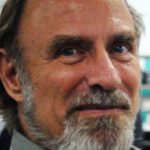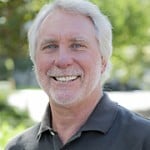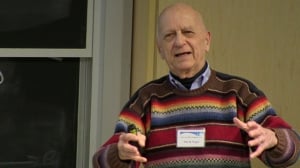Ruby Carat and the Cold Fusion Now! collective have released a new video documentary, this time tackling cold fusion theory with Edmund Storms HYDROTON A Model of Cold Fusion.
The 28-minute science special continues where the book The Explanation of Low Energy Nuclear Reaction left off. It features Dr. Edmund Storms describing his theory of the cold fusion/LENR reaction that focuses on the unusual form of hydrogen that can form in the nano-spaces of materials.
Nano-cracks in materials will have a high negative-charge along the walls of the space, allowing positively-charged hydrogen nuclei to be closer than they normally could.
Subject to resonance, the hypothesis proposes a linear array of hydrogen nuclei and electrons in the nano-crack that can engage in a “slow fusion” process, whereby the smaller bits of mass turn to energy by releasing coherent photons.
If true, the mechanism would be an extension of conventional nuclear models which only describes fusion in a hot plasma, where nuclei collide violently to fuse.
The action is animated by artist Jasen Chambers who modeled all the isotopes of hydrogen in the unique LENR process.
Ruby Carat has had multiple interviews with Dr. Storms since 2011, most recently in the offices of Cold Fusion Now! in Eureka, California, US. That video composite describes the Nano-gap Hydroton Model and its development.
Hypotheses of the Nano-gap Hydroton model are currently being tested for confirmation.
See Edmund Storms HYDROTON A Model of Cold Fusion on the Cold Fusion Now! Youtube page here: https://youtu.be/D4BPtwzsgiw
Edmund Storms’ book The Explanation of Low Energy Nuclear Reaction: An Examination of the Relationship between Observation and Explanation is available from his website http://www.lenrexplained.com
Dr. Edmund Storms website http://www.lenrexplained.com
HYDROTON animation by Jasen Chambers http://jasenlux.com
Title animation by Augustus Clark and Mike Harris http://augustusclark.com
Music by Esa Ruoho a.k.a. lackluster https://lackluster.bandcamp.com
ICCF-18 video by Eli Elliott http://www.elienation.com
Filmed, edited and narrated by Ruby Carat https://twitter.com/ColdFusionNow
Our work supports Cold Fusion Now! and Eugene Mallove’s Infinite Energy Foundation. We hope you will too.
https://coldfusionnow.org
http://infinite-energy.com
 Nuclear physicist and LENR theoretician Dr. Andrew Meulenberg talks about deep-orbit electrons as an explanation for LENR, and how this model addresses the vast variety of data in LENR experiments.
Nuclear physicist and LENR theoretician Dr. Andrew Meulenberg talks about deep-orbit electrons as an explanation for LENR, and how this model addresses the vast variety of data in LENR experiments.  Patreon is a platform for supporting creators. You can pledge as little as a dollar per episode. You can cap your monthly spend. There are thousands of creators on Patreon getting support for their work. Please support the Cold Fusion Now! podcast. Become a Patron!
Patreon is a platform for supporting creators. You can pledge as little as a dollar per episode. You can cap your monthly spend. There are thousands of creators on Patreon getting support for their work. Please support the Cold Fusion Now! podcast. Become a Patron!

